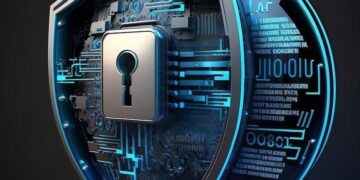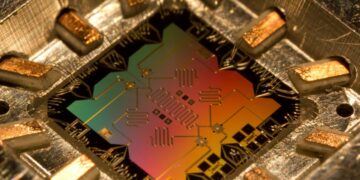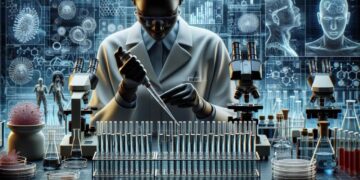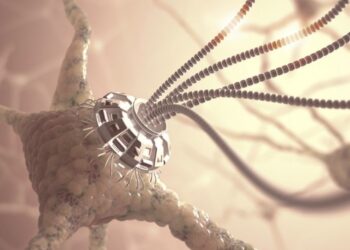In an era defined by relentless innovation, the future is not a distant concept but a rapidly unfolding reality, intricately shaped by groundbreaking technological advancements. From the micro-scale of genetic engineering to the macro-scale of interstellar exploration, technology is the undeniable architect of tomorrow’s world. This comprehensive article delves into the pivotal future technologies poised to redefine industries, societies, and the very fabric of human existence. We’ll explore their profound implications, the challenges they present, and the unparalleled opportunities they unlock, all while keeping a keen eye on the principles of search engine optimization (SEO) and the potential for Google AdSense revenue.
The Evolution of Artificial Intelligence and Machine Learning
At the forefront of this technological revolution is Artificial Intelligence (AI), a field rapidly transcending the boundaries of science fiction. AI, specifically its sub-field Machine Learning (ML), is no longer a nascent concept but a pervasive force, impacting everything from personalized recommendations to complex medical diagnoses. The future of AI promises even more profound integration into daily life, with advancements that will fundamentally alter how we work, interact, and perceive the world.
A. Deep Learning and Neural Networks: The backbone of modern AI, deep learning, powered by complex neural networks, mimics the human brain’s structure and function. Future iterations will boast even more sophisticated architectures, enabling machines to understand context, generate creative content, and make nuanced decisions with unprecedented accuracy. This will lead to highly intelligent virtual assistants, autonomous systems capable of complex problem-solving, and AI-driven scientific discovery accelerating research across various domains.
B. Reinforcement Learning and Autonomous Systems: Reinforcement learning, where AI learns through trial and error by interacting with its environment, is propelling the development of truly autonomous systems. Imagine self-driving cars navigating unpredictable urban landscapes with human-like intuition, robotic surgeons performing intricate operations with unparalleled precision, or intelligent drones managing vast agricultural fields. These systems will not only enhance efficiency but also improve safety and open up entirely new industries.
C. Ethical AI and Explainable AI (XAI): As AI becomes more powerful, the imperative for ethical considerations and transparency grows. Explainable AI (XAI) is a critical area of research focused on making AI decisions understandable to humans, fostering trust and accountability. The future will see robust frameworks for ethical AI development, ensuring that these powerful technologies are used responsibly and for the betterment of humanity, addressing concerns about bias, privacy, and job displacement.
D. AI in Healthcare and Medicine: AI’s transformative potential in healthcare is immense. From accelerating drug discovery and personalizing treatment plans based on an individual’s genetic makeup to early disease detection and robotic-assisted surgeries, AI will revolutionize medical practice. Predictive analytics will help anticipate outbreaks, and AI-powered diagnostic tools will offer more accurate and timely diagnoses, leading to better patient outcomes and more efficient healthcare systems.
E. AI in Education and Personalized Learning: AI will personalize education, adapting curricula and teaching methods to individual student needs and learning styles. AI tutors will provide customized support, while AI-powered analytics will identify learning gaps and optimize educational pathways. This will foster a more engaging and effective learning environment, empowering individuals with lifelong learning opportunities.
The Immersive World of Extended Reality (XR)
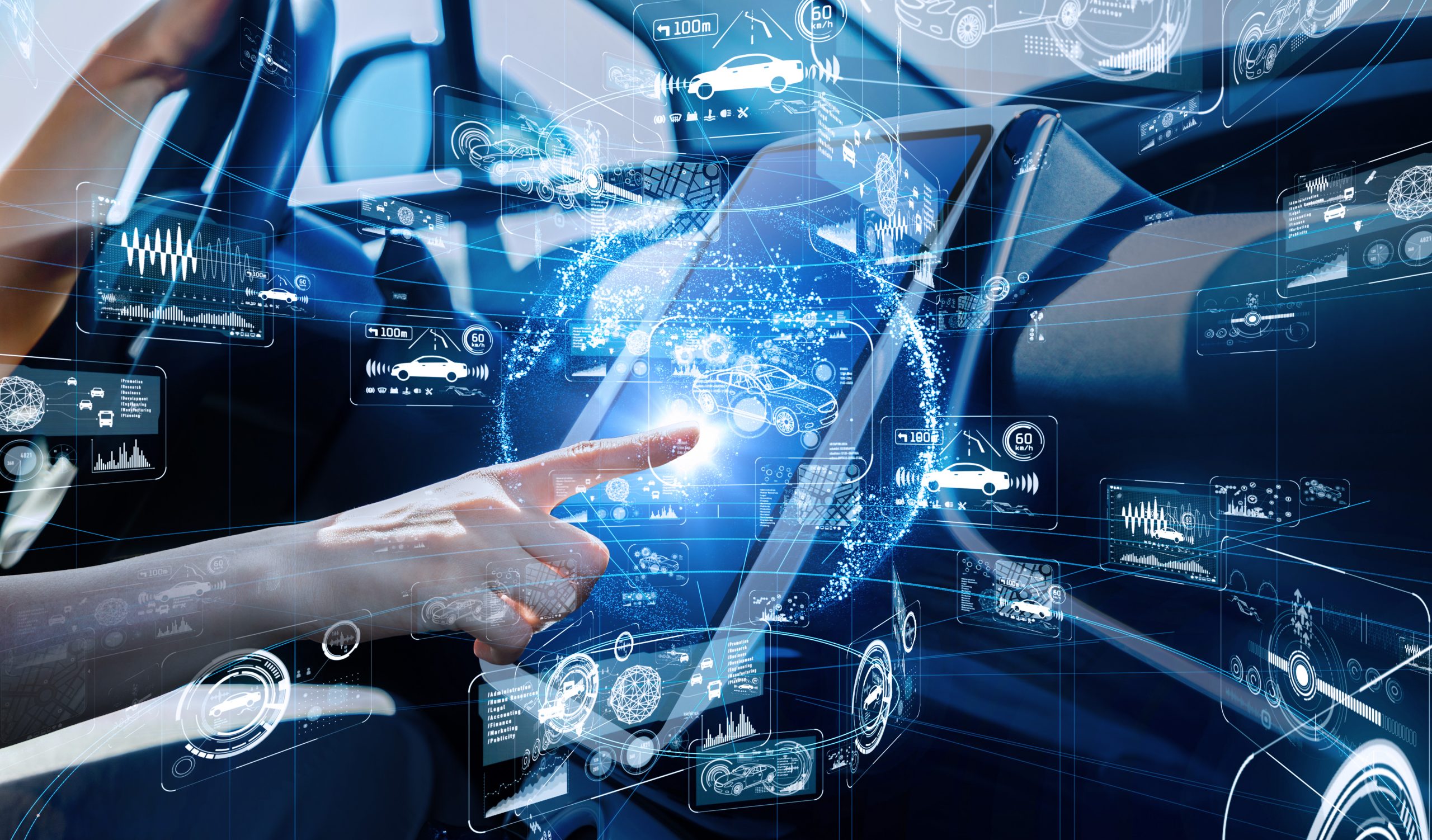
Extended Reality (XR), an umbrella term encompassing Virtual Reality (VR), Augmented Reality (AR), and Mixed Reality (MR), is set to revolutionize human-computer interaction and our perception of digital content. Far beyond entertainment, XR holds the key to immersive training, collaborative work, and entirely new forms of artistic expression.
A. Virtual Reality (VR) for Training and Simulation: VR will move beyond gaming to become an indispensable tool for highly realistic training and simulation in fields like medicine, aviation, and engineering. Surgeons will practice complex procedures without risk, pilots will train in diverse weather conditions, and engineers will design and test prototypes in virtual environments, significantly reducing costs and improving skill development.
B. Augmented Reality (AR) in Daily Life: AR, which overlays digital information onto the real world, will become seamlessly integrated into our daily lives. Imagine smart glasses providing real-time navigation, displaying product information in stores, or offering interactive overlays for educational purposes. AR will transform retail, tourism, and even social interactions, blurring the lines between the physical and digital realms.
C. Mixed Reality (MR) for Collaboration and Design: Mixed Reality, which allows for interaction with virtual objects in the real world, will revolutionize collaboration and design. Engineers in different locations will be able to co-design 3D models in a shared virtual space, architects will walk through virtual buildings on real construction sites, and educators will create interactive learning experiences that blend physical and digital elements.
D. Haptic Feedback and Multi-Sensory XR: The future of XR will go beyond visual and auditory experiences. Advances in haptic feedback technology will allow users to “feel” virtual objects, while the integration of scent and taste technologies will create truly multi-sensory immersive experiences, making virtual worlds indistinguishable from reality.
E. The Metaverse and Persistent Virtual Worlds: The concept of the Metaverse, a persistent, interconnected set of virtual worlds, will likely be powered by XR technologies. This digital universe will offer new avenues for social interaction, commerce, entertainment, and even work, creating a parallel digital economy and society.
The Quantum Leap: Quantum Computing
Quantum Computing represents a paradigm shift in computation, harnessing the principles of quantum mechanics to solve problems intractable for even the most powerful classical computers. While still in its early stages, its potential implications are monumental.
A. Solving Intractable Problems: Quantum computers will be capable of solving complex optimization problems, simulating molecular interactions for drug discovery, and breaking modern encryption standards. This will accelerate scientific research across disciplines, from materials science to finance.
B. Drug Discovery and Materials Science: The ability of quantum computers to accurately simulate molecular behavior will revolutionize drug discovery, leading to the development of highly effective and personalized medicines. In materials science, it will enable the design of novel materials with unprecedented properties, from superconductors to highly efficient catalysts.
C. Cryptography and Cybersecurity: Quantum computing poses a significant threat to current encryption methods, necessitating the development of quantum-resistant cryptography. Simultaneously, quantum cryptography offers inherently secure communication channels, leading to a new era of cybersecurity.
D. Financial Modeling and Optimization: Quantum algorithms will significantly enhance financial modeling, enabling more accurate risk assessment, portfolio optimization, and fraud detection. This will lead to more stable and efficient financial markets.
E. Challenges and Roadblocks: Despite its immense potential, quantum computing faces significant challenges, including maintaining qubit coherence, error correction, and scalability. The development of robust and accessible quantum hardware remains a key hurdle.
The Genomic Revolution and Biotechnology
Biotechnology is rapidly advancing, with the ability to manipulate life at its most fundamental level – the genome. The implications for health, agriculture, and environmental sustainability are profound.
A. CRISPR-Cas9 and Gene Editing: CRISPR-Cas9, a revolutionary gene-editing tool, allows for precise modifications to DNA. This technology holds immense promise for curing genetic diseases, developing disease-resistant crops, and even potentially enhancing human traits, while also raising significant ethical considerations.
B. Personalized Medicine and Pharmacogenomics: Advances in genomics will lead to highly personalized medicine, where treatments are tailored to an individual’s unique genetic makeup. Pharmacogenomics will predict how a patient will respond to certain drugs, optimizing dosages and minimizing adverse reactions.
C. Synthetic Biology and Bio-Manufacturing: Synthetic biology involves designing and constructing new biological parts, devices, and systems, or redesigning existing natural biological systems. This field will enable the bio-manufacturing of sustainable fuels, biodegradable plastics, and novel biomaterials, offering environmentally friendly alternatives to traditional industrial processes.
D. Regenerative Medicine and Tissue Engineering: Regenerative medicine aims to replace or regenerate human cells, tissues, or organs to restore or establish normal function. Advances in tissue engineering will allow for the creation of lab-grown organs for transplantation, offering hope to millions awaiting organ donations.
E. Ethical and Societal Implications: The power to manipulate life raises profound ethical questions concerning designer babies, genetic discrimination, and the potential for unintended consequences. Careful consideration and robust regulatory frameworks will be essential to ensure responsible development.
Sustainable Technologies and Renewable Energy
Addressing climate change and ensuring a sustainable future are paramount. Future technologies will play a crucial role in transitioning to a clean energy economy and mitigating environmental impact.
A. Advanced Renewable Energy Sources: Beyond traditional solar and wind power, future renewable energy sources will include highly efficient perovskite solar cells, advanced geothermal systems, and potentially even controlled fusion power, offering limitless clean energy.
B. Energy Storage Solutions: The intermittency of renewable energy sources necessitates robust energy storage solutions. Future innovations in battery technology (e.g., solid-state batteries), hydrogen fuel cells, and grid-scale energy storage will ensure reliable and consistent power supply.
C. Carbon Capture and Utilization (CCU): Technologies for directly capturing carbon dioxide from the atmosphere or industrial emissions and converting it into valuable products will be crucial for mitigating climate change and achieving net-zero emissions.
D. Circular Economy and Waste-to-Energy: The principles of a circular economy, where waste is minimized and resources are reused, will be driven by advanced recycling technologies, bio-digestion for energy generation, and innovative materials science that allows for infinitely recyclable products.
E. Sustainable Agriculture and Food Production: Vertical farming, precision agriculture utilizing AI and IoT, and lab-grown meat will revolutionize food production, reducing land and water usage, and ensuring food security for a growing global population.
Robotics and Automation
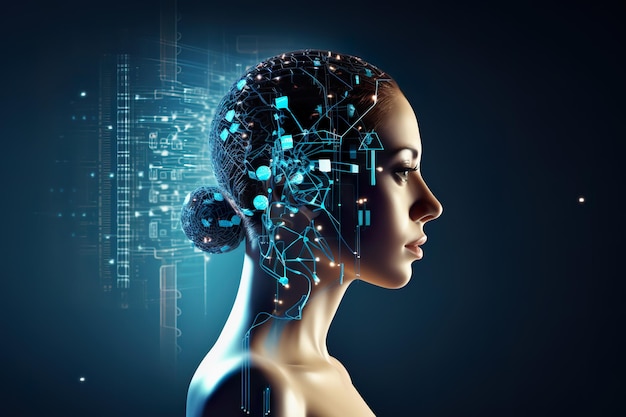
Robotics is evolving beyond industrial arms, with future robots becoming more adaptable, intelligent, and capable of operating in unstructured environments, impacting everything from logistics to personal assistance.
A. Collaborative Robots (Cobots): Cobots are designed to work safely alongside humans, augmenting human capabilities rather than replacing them. They will be prevalent in manufacturing, healthcare, and logistics, improving efficiency and reducing physical strain.
B. Service Robots and Human-Robot Interaction: Service robots will become increasingly common in homes, hospitals, and public spaces, assisting with tasks like cleaning, elder care, and delivering goods. Advances in human-robot interaction will make these interactions more intuitive and natural.
C. Autonomous Mobile Robots (AMRs): AMRs, capable of navigating and performing tasks independently in dynamic environments, will revolutionize warehousing, last-mile delivery, and inspection in hazardous environments, leading to significant operational efficiencies.
D. Soft Robotics and Bio-Inspired Robotics: Soft robotics, utilizing compliant materials, will lead to robots that are safer, more adaptable, and capable of delicate manipulation. Bio-inspired robotics, drawing inspiration from natural organisms, will create robots with unprecedented agility and dexterity.
E. Robotics in Space Exploration and Hazardous Environments: Robots will play an increasingly vital role in space exploration, performing tasks too dangerous or complex for humans. They will also be deployed in hazardous environments on Earth, such as disaster zones and nuclear facilities, ensuring human safety.
The Power of Connectivity: 5G, 6G, and Beyond
High-speed, low-latency connectivity is the backbone of many future technologies, enabling seamless communication between devices, people, and systems.
A. 5G and Edge Computing: 5G offers unprecedented speeds and low latency, enabling real-time data processing closer to the source through edge computing. This is crucial for autonomous vehicles, IoT applications, and immersive XR experiences.
B. 6G and Beyond: The development of 6G will push the boundaries of connectivity even further, promising even higher speeds, near-zero latency, and the integration of AI directly into the network. This will facilitate truly ubiquitous connectivity and the seamless operation of highly complex interconnected systems.
C. Satellite Internet and Global Coverage: Advances in satellite internet constellations will provide reliable and high-speed internet access to remote and underserved areas globally, bridging the digital divide and fostering greater connectivity.
D. Internet of Things (IoT) Expansion: The Internet of Things (IoT), a network of interconnected devices, will expand exponentially, with billions of sensors and devices collecting and sharing data. This will enable smart cities, intelligent infrastructure, and highly efficient resource management.
E. Tactile Internet and Real-time Control: The “tactile internet” refers to ultra-low latency networks that enable real-time control of physical objects over long distances. This has implications for remote surgery, controlling autonomous vehicles from afar, and highly responsive industrial automation.
Cybersecurity in a Hyper-Connected World
As technology advances and connectivity increases, the importance of robust cybersecurity measures becomes paramount. Protecting data, infrastructure, and privacy will be a continuous challenge.
A. AI-Powered Cybersecurity: AI will play an increasingly significant role in detecting and responding to cyber threats, identifying anomalies, predicting attacks, and automating defense mechanisms in real-time.
B. Blockchain for Security and Trust: Blockchain technology, with its inherent immutability and decentralized nature, offers robust solutions for secure data storage, identity management, and supply chain transparency, enhancing trust in digital interactions.
C. Quantum-Resistant Cryptography: The advent of quantum computing necessitates the development and widespread adoption of quantum-resistant cryptographic algorithms to protect sensitive data from future quantum attacks.
D. Zero-Trust Architecture: The “zero-trust” security model, which assumes no user or device can be trusted by default, will become a standard, requiring continuous verification and authentication, regardless of location within a network.
E. Human Factor in Cybersecurity: Despite technological advancements, the human element remains a critical vulnerability. Continuous education and awareness programs will be crucial to mitigate risks associated with social engineering and human error.
Space Exploration and Commercialization
The future of space exploration is vibrant, with increasing private sector involvement and ambitious plans for lunar and Martian colonization, driven by technological breakthroughs.
A. Reusable Rockets and Cost Reduction: The development of fully reusable rockets has dramatically reduced the cost of space launches, making space more accessible and fostering innovation in satellite deployment and space tourism.
B. Lunar and Martian Colonization: Ambitious plans for establishing permanent human settlements on the Moon and eventually Mars are driving innovation in life support systems, resource utilization, and extraterrestrial construction.
C. Space Mining and Resource Utilization: The potential for mining asteroids and other celestial bodies for valuable resources, such as water, rare earth elements, and precious metals, is a long-term vision that could revolutionize global economies.
D. Space Tourism and Commercial Space Travel: Commercial space tourism is rapidly becoming a reality, offering unprecedented opportunities for private citizens to experience space, while also driving innovation in spacecraft design and safety.
E. Satellite Constellations for Earth Observation and Communication: The proliferation of vast satellite constellations is revolutionizing Earth observation, providing unprecedented data for climate monitoring, disaster response, and global communication.
Conclusion: Navigating the Future
The technologies discussed in this article represent just a glimpse into the future, a future that promises unprecedented possibilities but also presents significant challenges. The convergence of AI, XR, quantum computing, biotechnology, and advanced connectivity will create a world vastly different from our own, demanding adaptability, foresight, and ethical consideration.
Navigating this complex landscape requires a proactive approach. Investment in research and development, fostering interdisciplinary collaboration, and establishing robust regulatory frameworks will be crucial. Furthermore, ensuring equitable access to these technologies and addressing potential societal disruptions, such as job displacement and privacy concerns, will be paramount.
Ultimately, the future is not something that simply happens to us; it is something we actively shape. By understanding the profound implications of these emerging technologies, we can work collectively to harness their power for the betterment of humanity, creating a future that is not only technologically advanced but also equitable, sustainable, and prosperous for all. The journey into tomorrow’s world has just begun, and the technological horizon continues to expand, promising a future limited only by our imagination and our collective will.



